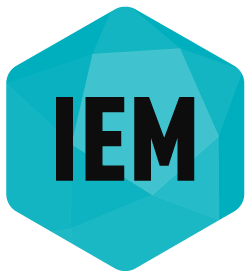- Home
- Release Notes
- HCL IntelliOps Event Managemen...
HCL IntelliOps Event Management v1.1

RELEASE DETAILS
| Product Name | HCL IntelliOps Event Management |
| Version Number | 1.1 |
| Release Month | October , 2024 |
| Release Period (if release was phased) | August 2024-Sept 2024 |
| Release Size (KB/MB/GB) | N/A |
The release notes capture the details of features and functionalities introduced in HCL IEM as part of its second release version 1.1.
Version 1.1 focuses on the important enhancements of the features along with addition of new features as well to improve the efficiency of the system.
What’s onboard?
Following are the enhancements/upgrades and features as part of HCL IEM v1.1:
- BigFix AEX integration to leverage Gen AI capabilities for Incident Triaging: Leveraging GenAI for Intelligent Insights to analyze and monitor incidents, providing more intelligent insights and improving MTTR. We are focusing on Enhanced User Experience as this feature would streamline incident resolution processes and improve overall user satisfaction.
- Multiple priority incident creation via IEM: Leveraging Dynamic Incident Prioritization by defining conditions to automatically assign appropriate incident priorities based on CI and IEM criticality. This shows improved ServiceNow Integration ensuring seamless integration with ServiceNow and provide a more user-friendly experience for selecting incident priorities.
- New role for ticket creation by SRE: Leveraging enhanced security and efficiency by creating a default role with restricted permissions for SREs, streamlining the ticket creation process and improving security.
- Self-Monitoring of Customer-side IMM GW component: Implementing a default correlation rule to monitor NiFi-IEM connectivity. By analyzing NiFi heartbeat events, the system automatically generates actionable alerts for connectivity disruptions, eliminating the need for manual rule creation and ensuring proactive issue detection. Upon connection restoration, the system automatically clears the generated alert.
OOB NiFi Connectors Development and management via IMM (Integration Management Module) Portal: Added more single-click connectors for seamless integration with leading element monitoring solutions, ensuring a comprehensive data ingestion via NiFi in real-time. The table below shows the connectors being released in this release.
S.No. Event Connectors Status 1 Amazon CloudWatch - Pull Completed 2 Amazon CloudWatch - Push Completed 3 Apache Kafka HTTP Completed 4 Apache Kafka (SASL) - For Plain text authentication Completed 5 Apache Kafka (SSL) Completed 6 Microsoft Azure Completed 7 DX Spectrum Completed 8 Elasticsearch (ELK) Completed 9 Email-IMAP Completed 10 Email-POP3 Completed 11 Fluentd Completed 12 GCP Completed 13 Generic Rest Completed 14 Generic Socket Completed 15 Generic Syslog Completed 16 Grafana Completed 17 Nagios Completed 18 Nimsoft Completed 19 OpenNMS Completed 20 RabbitMQ Completed 21 Science Logic Completed 22 SolarWinds SWO Completed 23 Splunk Completed 24 Sumo Logic Completed 25 DX Spectrum Completed 26 System Center Operations Manager (SCOM) Completed Connector health check monitoring dashboard: The IMM Portal features a comprehensive dashboard for monitoring the health and performance of integrated connectors. Some Key metrics highlights include:
- Latency: Tracks the time it takes to establish connections with third-party tools like Zabbix etc.
- Response Time: Measures the time it takes for connectors to process data and respond to requests.
- Load: Monitors the workload on connectors to identify potential bottlenecks or performance issues.
This enhanced visibility empowers users to proactively address connector-related problems and optimize data ingestion efficiency.
- Correlation rules priority resequencing: Correlation rules priority resequencing can be done in case of reordering\deletion of existing rules via drag action.
- Re-submission of deleted entities with same Name/ID: Enabling users to recycle names and IDs of previously removed entities for new records. Hence, simplifying the process of managing entities.
- Event correlation rule default configuration enhancement: The system will initially monitor and analyse incoming events and alerts without creating incidents on Day 0 based on default correlation rules configuration. This allows for a baseline assessment of normal behaviour and helps filter out irrelevant noise.
- Group filtering option enhancement for events/alerts/actionable: Implemented enhanced Data Filtering by allowing users to filter events, alerts, and actionable based on custom fields added to entities. We are also providing options to sort data based on various fields like Source, Parameter, Ascending Time, etc.
- Maintenance window validation and upgrades: Implementing flexible Maintenance Window Configuration by allowing users to select multiple days of the week for maintenance windows. Along with that enforced validation of maintenance window configurations before submission.
- Topology view expansion: Maintaining an expanded topology view even when branching into CI components, providing a more comprehensive view of the IT environment.
HCL IntelliOps Event Management: Integration Management Module
HCL IEM Collector refers to effectively gathering data from diverse sources, providing a wide range of single click, custom integrations compliant with the industry standards for connectors and APIs. The events, data and performance connectors are developed in Apache NiFi. These OOB NiFi connectors can be leveraged for data ingestion managed by IMM (Integration Management Module) Portal. IMM is an integration gateway of IntelliOps Event Management which is used for 3rd party tools integration and ingesting event, performance, and configuration data into IntelliOps Event Management for performing event management functions.
Following are the limitations/restrictions with respect to the features and functionalities released as part of HCL IEM v1.1
Default data retention for user generated chat data is now 12 months.
- For each device/customer there will be 10 events per day ingested on SaaS platform and each data point size is considered as 2 KB.
- As per the fair usage policy 300 Event per Device per Month (Per Customer) is the capping.
- There is an assumption of 20 correlation rules per customer.
- Limited Use-case implementation in integration with BigFix AEX
HCL IEM is hosted on Google Cloud Platform and utilizes SaaS services. System Requirements are applicable only for
IMM, a gateway component of IntelliOps Event Management System.
Prerequisites for IMM
Prerequisites are specific condition that needs to be met before initiating the configuration. Hence, mentioned below are pre-requisites for IMM:
- Supported OS for IMM
- Linux RHEL 9.x
- Supported Web Browsers
- Microsoft Edge: Current or previous version
- Mozilla Firefox: Current or previous version
- Google Chrome: Current or previous version
- Safari: Current or previous version
- Supported OS for IMM
Prerequisites for Apache NiFi
Prerequisites are specific condition that needs to be met before initiating the configuration. Hence, mentioned below are pre-requisites for NiFi:
System Requirements for NiFi
Apache NiFi requires compute and memory resources dependent upon the size and nature of the dataflow involved. The data is stored on disk while NiFi is processing it. So NiFi needs to have sufficient disk space allocated for its various repositories, particularly the content repository, flowfile repository, and provenance repository. NiFi needs to be configured according to the following system requirements:
- Supported OS for NIFI
- Linux (Recommended) RHEL 9.x
- Supported Web Browsers
- Microsoft Edge: Current & (Current - 1)
- Mozilla Firefox: Current & (Current - 1)
- Google Chrome: Current & (Current - 1)
- Safari: Current & (Current - 1)
- Hardware Sizing Recommendation for NiFi and IMM
Following is the table for Hardware Sizing of NiFi and IMM: -
Tool Tool Component Type Count of VMs Operating System H/w Requirements Database Requirement Other Requirements NiFi Minimum 3 RHEL9 8 core and 16 GB of RAM Requires Java 8 or Java 11
Service Account nifiadminIMM Web Non-HA 1 RHEL9.x 2CPU, 4GB, 50 GB Data Disk NA IMM DB Non-HA 1 RHEL9.x 4CPU, 8GB, 250 GB Data Disk Postgresql 15 IMM Web HA 2 RHEL9.x 2CPU, 4GB, 50 GB Data Disk NA Load Balancer IMM DB HA 3 RHEL9.x 4CPU, 8GB, 250 GB Data Disk Postgresql 15
IEM Event Tier-Per Month Sizing Up to 750000 Small Up to 3000000 Medium Up to 24000000 Large
- Networking Requirement
- 1 Gbps NIC card
Port Requirement for NiFi and IMM
Following is the table for Port details of NiFi and IMM: -
Port Protocol Direction Source Destination Description Application Name 9443 TCP Bi-directional IMM NiFi Servers To open NiFi UI NiFi 10443 TCP Bi-directional NiFi Servers NiFi Servers To run NiFi as a cluster NiFi 11443 TCP Bi-directional NiFi Servers NiFi Servers To run NiFi as a cluster NiFi 6342 TCP Bi-directional NiFi Servers NiFi Servers To run NiFi as a cluster NiFi 2181 TCP Bi-directional NiFi Servers NiFi Servers To run NiFi as a cluster NiFi 2888 TCP Bi-directional NiFi Servers NiFi Servers To run NiFi as a cluster NiFi 3888 TCP Bi-directional NiFi Servers NiFi Servers To run NiFi as a cluster NiFi 443 TCP Bi-directional End User IMM Server Web Application IMM 4100 TCP Bi-directional End User IMM Server Web API IMM 4300 TCP Bi-directional End User IMM Server Orchestrator Service IMM 5432 TCP Bi-directional IMM Server IMM DB Server Database IMM
HCL IntelliOps Event Management can help an enterprise in its ambition to simplify and automate its IT Operations with the shortest time-to-value approach. With robust correlation and detection capabilities powered with the best in line AI algorithms and efficient integration management module, it minimizes human intervention with the goal of automating the process of automation itself, reducing implementation cycles to speed up ROI realizations and improve business outcomes. With our elaborate Event Management product, the operations team never misses critical or outage scenarios at the right time. This ensures availability of critical business services and infrastructure for an organization and learns from recurring scenarios to address common issues.
For any queries/clarifications, please reach out to Support
